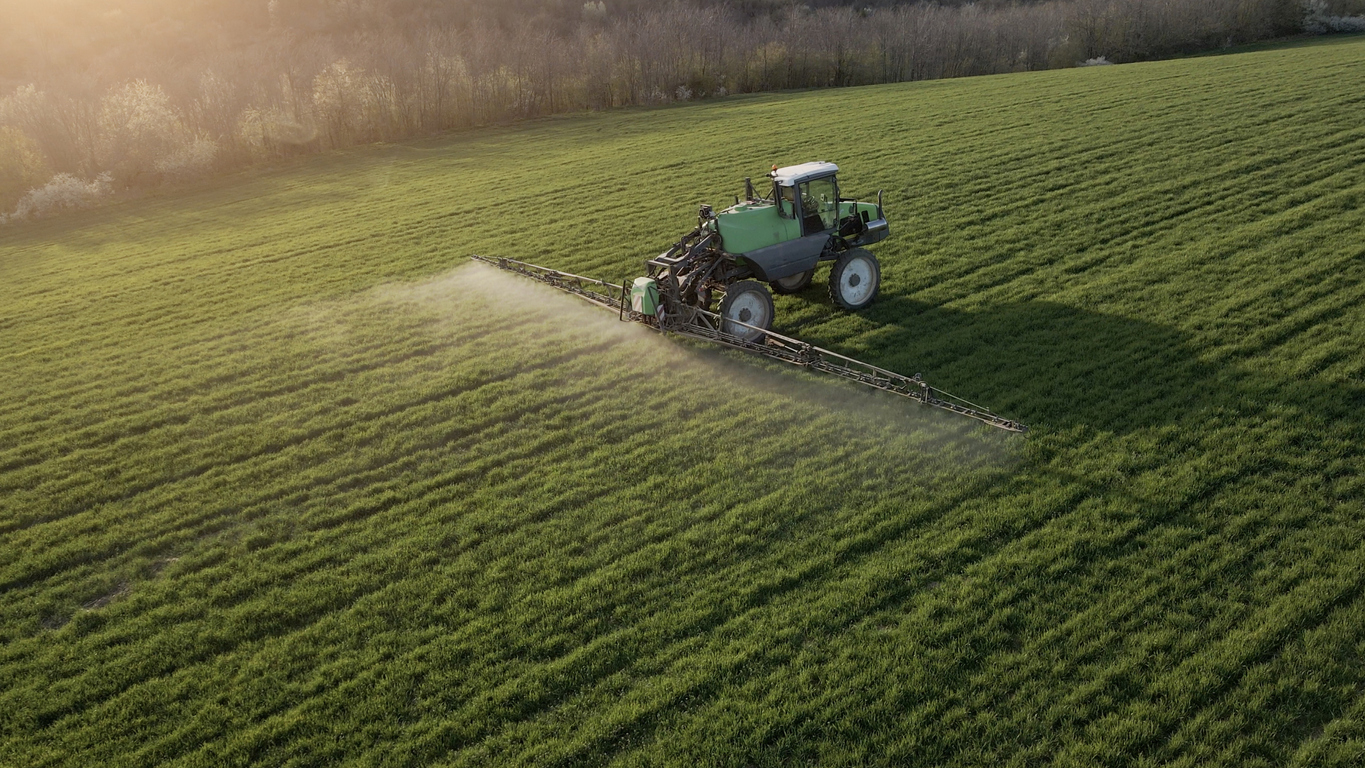New Herbicides
Glyphosate has been the #1 herbicide used in the USA since the 1990’s when glyphosate resistant genes (genetically modified) were inserted into crops. Each year, farmers lose about $33 billion dollars in crop losses due to weeds. Over time, 514 unique weeds have developed resistance to 167 different herbicides in 94 crops in 71 countries. Conventional synthetic herbicides is a $27 billion dollar market in the USA. However, 41 countries and 25 states have either banned or restricted the use of glyphosate products.
The introduction of safer, new bio-herbicides using natural plant extracts is a distinct advantage; for farmers, for consumers, and for the environment. These biocide herbicides offer new sites and modes of action to reduce weed resistance and can be used in organic and conventional agricultural fields. The worldwide bio-pesticide market is expected to reach $10.63 billion dollars by 2027. Government regulations, environmental risks to pollution, and consumer demand for organic produce are pushing manufacturers to invest in bio-research for these new products.
Harpe’s is a new biological herbicide that control weeds, including those resistance to synthetic chemistries, by using natural plant extracts. These plant extracts can be adjusted to fit different weed control scenarios. As a Pre-emergence herbicide, Harpe enters the seedlings, interrupts the natural growth-signaling process, and inhibits weed-seed development. As a Post emergent herbicide, Harpe enters the plant cell wall, and disrupts cell membranes releasing free radicals. Green plant tissue starts to wilt and becomes discolored as the plant dies within a few days.
Harpe can also enhance synthetic herbicide efficacy by controlling resistant weed populations. The result is that reduced amounts of synthetic herbicide are needed to achieve weed control. Harpe can be used alone or in combination with other synthetic herbicides. Organic certification is possible since Harpe uses natural plant extracts. Harpe has 3 modes of herbicide action so it can be tailored to fight individual weed species in each field. This biocide herbicide improves soil health and is good for the environment because it easily degrades in a short period of time. Harpe controls a wide spectrum control of broadleaf and grass seeds or weeds, with natural (organic) herbicide formulations for pre, post and desiccation spray use patterns.
Another new herbicide is Reviton (Tiafenacil) with an active ingredient called TERGEO manufactured by HELM Agro US, Inc. Reviton is a nonselective contact burn down herbicide (Group 14 herbicide, PPO inhibitor) used for pre-plant and pre-emergence application for controlling a broad spectrum of young emerged annual weeds less than 5 inches tall (suppresses perennial weeds). Reviton shuts down chlorophyll and photosynthesis in the plant. Repeated use or spraying of Group 14 herbicides may result in weed resistance over time. Reviton needs an adjuvant such as methylated seed/crop oil concentrate (MSO/COC) for optimal performance (see label) but is absorbed quickly and causes death of green weed tissues within a few days. Rates are 1-3 fluid ounces per acre with up to two applications and can be applied to corn (not for sweet corn or popcorn) and wheat (grass rotational crop interval=0) and soybeans (14-day crop rotational interval).
Farmers may add ammonium nitrogen fertilizer (28-32%) to increase herbicide performance. Reviton does not work well on tall weeds, mowed or stressed weeds (drought, cloudy, low temperatures, or poor growing conditions), or if spray coverage is poor. Generally, requires at least 10-20 gallons of water as a carrier (see label) with flat fan nozzles and large droplet size to reduce drift. Reviton lasts about 7 days in the soil. Farmers should avoid the potential for runoff on poorly drained soils.
Another issue farmers are seeing this year is poor cover crop establishment and growth. Soil organic matter, high microbial activity, sunlight, warm temperatures, adequate moisture, and pH generally affect the breakdown of herbicides. Looking back, while the summer of 2021 was fairly wet, August was very dry. Due to this dry weather, herbicide carryover seems to be a major problem. Many cover crops started to germinate but then quickly died off. In some cases, some plants survived but the plants may be weak and the roots poorly developed with spotty cover crop populations. Generally, the hills and sandy soils with low soil organic matter fared the worst. Most cover crop species have not been bred for herbicide tolerance like our mains crops (corn, soybeans, wheat).
In corn, Pyroxasulfone (Zidua) and metolachlor (Dual) reduce grasses, atrazine and simazine, Mesotrione (Callisto, Lumax, Zemax, Lexar, Acuron), flumetsulam (Python), and clopyralid (Stinger, Hornet, SureStart, Resicore) cause issues with legumes and brassicas (radish). In soybeans, Chlorimuron (Classic, Canopy, Cloak, Valor XLT, Authority XL, etc.) cause problems for legumes and brassicas.
